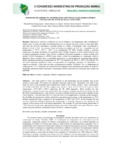Use este identificador para citar ou linkar para este item:
http://www.alice.cnptia.embrapa.br/alice/handle/doc/534530Registro completo de metadados
| Campo DC | Valor | Idioma |
|---|---|---|
| dc.contributor.author | LIMA, F. R. G. | pt_BR |
| dc.contributor.author | ARAUJO, A. A. de | pt_BR |
| dc.contributor.author | SANTOS, D. O. | pt_BR |
| dc.contributor.author | FACO, O. | pt_BR |
| dc.contributor.author | LINARD, M. A. B. | pt_BR |
| dc.contributor.author | SILVA, K. Q. da | pt_BR |
| dc.date.accessioned | 2011-04-10T11:11:11Z | pt_BR |
| dc.date.available | 2011-04-10T11:11:11Z | pt_BR |
| dc.date.created | 2008-12-10 | pt_BR |
| dc.date.issued | 2008 | pt_BR |
| dc.identifier.citation | In: CONGRESSO NORDESTINO DE PRODUÇÃO ANIMAL, 5.; SIMPÓSIO NORDESTINO DE ALIMENTAÇÃO DE RUMINANTES, 11.; SIMPÓSIO SERGIPANO DE PRODUÇÃO ANIMAL, 1., 2008, Aracaju. Anais... Aracaju: Sociedade Nordestina de Produção Animal; Embrapa Tabuleiros Costeiros, 2008. 3 f. 1 CD ROM. | pt_BR |
| dc.identifier.uri | http://www.alice.cnptia.embrapa.br/alice/handle/doc/534530 | pt_BR |
| dc.description | Objetivou-se verificar a influência do tipo de diluidor e da temperatura sobre motilidade do sêmen ovino. A coleta do sêmen foi efetuada uma vez por semana em cinco ovinos da raça Santa Inês, após feito um pool dos ejaculados e avaliado quanto ao volume, à motilidade, vigor, concentração e diluído no Leite e Tris. As amostras foram envasadas em palhetas de 0,25 ml e congeladas em três temperaturas (- 79o C, -90o C, -120o C) no equipamento TK 3000. Quando atingida a primeira temperatura, um grupo de palhetas foi transferido para o botijão criogênico e assim sucessivamente, para às demais temperaturas testadas. Após 30 dias, as palhetas foram descongeladas e o sêmen avaliado pelo método CASA. Procedeu-se a ANOVA para testar o efeito da temperatura de congelação sobre os diluidores. Para o diluidor leite, a motilidade progressiva e a percentagem de espermatozóide rápidos diferiu significativamente para temperatura de -79o C em relação às de -90o C e -120o C. No diluidor Tris não houve diferença significativa entre as temperaturas de congelação, entretanto foi significativo e superior ao diluidor a base leite em todas as temperaturas testadas. O diluidor Tris e a temperatura de congelação de -79o C mostraram ser o protocolo de congelação mais apropriado para sêmen de carneiros Santa Inês, entretanto estudos utilizando a inseminação artificial precisam ser conduzidos para validar sua qualidade. Abstract:: This study aimed to verify the influence of the temperature and the extender type on the motility of ram semen. The semen was collected a time per week in five ?Santa Inês? ram, after it was made one pool of the ejaculated and evaluated how much to the volume, motility, vigor, concentration and diluted with Milk and Tris.The samples were stored in straw of 0,25 mL to be frozen in three temperatures (-79°C,-90°C,-120°C) employing the TK 3000 equipment. When reached the first temperature, a group of straws was transferred to the cryogenic container and thus successively, for the the others tested temperatures. After 30 days, the straws had been thawed and the semen evaluated for the CASA method. It was used the ANOVA to test the effect of the temperature of freezing on the extenders. For the Milk, the progressive motility and the fast spermatozoid percentage for the temperature of -79°C differed significantly when compared to the temperatures of -90°C and -120°C. In the extender Tris did not have significant difference between the temperatures of freezing, however it was significant and superior to the extender milk in all tested temperatures. The extender Tris and the freezing temperature of -79°C showed to be the more appropriate freezing protocol for ?Santa Inês? ram semen. However more studies using the artificial insemination need to be lead to validate its quality. | pt_BR |
| dc.language.iso | por | pt_BR |
| dc.rights | openAccess | pt_BR |
| dc.subject | Raça Santa Inês | pt_BR |
| dc.subject | Diluidor | pt_BR |
| dc.subject | Conservação de sêmen | pt_BR |
| dc.subject | Semen preservation | pt_BR |
| dc.subject | Semen diluents | pt_BR |
| dc.title | Efeito do diluidor e da temperatura de congelação sobre o sêmen congelado de ovino da raça Santa Inês. | pt_BR |
| dc.type | Artigo em anais e proceedings | pt_BR |
| dc.date.updated | 2019-09-25T11:11:11Z | pt_BR |
| dc.subject.thesagro | Ovino | pt_BR |
| dc.subject.thesagro | Carneiro | pt_BR |
| dc.subject.thesagro | Reprodução animal | pt_BR |
| dc.subject.thesagro | Inseminação artificial | pt_BR |
| dc.subject.thesagro | Congelamento | pt_BR |
| dc.subject.thesagro | Criopreservação | pt_BR |
| dc.subject.thesagro | Temperatura | pt_BR |
| dc.subject.nalthesaurus | Sheep | pt_BR |
| dc.subject.nalthesaurus | Reproduction | pt_BR |
| dc.subject.nalthesaurus | Artificial insemination | pt_BR |
| dc.subject.nalthesaurus | Rams | pt_BR |
| dc.subject.nalthesaurus | Cryopreservation | pt_BR |
| riaa.ainfo.id | 534530 | pt_BR |
| riaa.ainfo.lastupdate | 2019-09-25 -03:00:00 | pt_BR |
| dc.contributor.institution | Fátima Révia Granja Lima, pós-graduanda UFC; Airton Alencar de Araujo, UFC; Diônes Oliveira Santos, Embrapa Caprinos (CNPC); Olivardo Faco, CNPC; Marco Antonio Basílio Linard, graduando UFC; Katiane Queiroz da Silva, pós-graduanda UFC. | pt_BR |
| Aparece nas coleções: | Artigo em anais de congresso (CNPC)  | |
Arquivos associados a este item:
| Arquivo | Descrição | Tamanho | Formato | |
|---|---|---|---|---|
| AACEfeitododiluidor.pdf | 76,05 kB | Adobe PDF |  Visualizar/Abrir |









